Saudi Arabia is reportedly scaling back its ambitions for the NEOM desert development project, with plans for fewer residents and reduced completion expectations by 2030 due to financial concerns and budget uncertainties.
By 2030, the Saudi government at one point hoped to have 1.5 million residents living in The Line, the biggest project within Crown Prince Mohammed bin Salman (MBS)’s plans for diversifying the oil-dependent economy, according to people familiar with the matter.
Officials have long said The Line would be built in stages, expecting it to ultimately cover a 170-kilometer stretch of desert along the coast.
With the latest pullback, though, officials expect to have just 2.4 kilometers of the project completed by 2030, the person familiar with the matter told Bloomberg, asking not to be named discussing non-public information.
According to a document seen by Bloomberg, at least one contractor has started to dismiss a portion of the workers it employs on the site.
Representatives for NEOM and the Saudi Kingdom’s Public Investment Fund (PIF), the main entity that owns and is funding the project, declined to comment.
Saudi Arabia is scaling back on The Line, with plans for fewer residents and reduced completion expectations by 2030 due to financial concerns
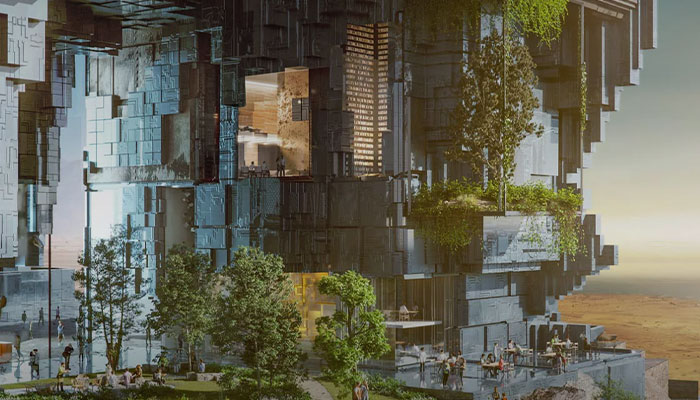
NEOM is a planned cross-border city in the Tabuk Province of northwestern Saudi Arabia. It is part of the Saudi Vision 2030 project, aimed at diversifying the economy and reducing Saudi Arabia’s dependence on oil. NEOM encompasses The Line project.
Crown Prince Mohammed intended for NEOM, estimated to be worth $1.5 trillion, to be a showpiece that would transform his country’s economy and serve as a testbed for technologies that could revolutionize daily life.
Along with The Line, NEOM’s plans included an industrial city, ports, and tourism developments. It’s also set to host the Asian Winter Games in 2029 at a mountain resort called Trojena, Bloomberg reported.
Work has continued on other parts of the broader NEOM project, as officials have reportedly maintained their overall objectives for The Line, people familiar with the matter told Bloomberg.
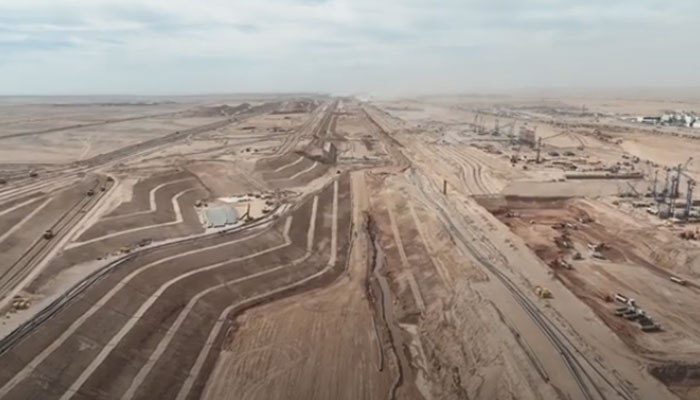
As per the American business and capital market-focused outlet, another development within NEOM, which is turning an island in the Red Sea into a luxury tourist destination known as Sindalah, is due to open this year.
The pullback on The Line comes as the kingdom’s sovereign wealth fund has yet to approve NEOM’s budget for 2024, the people familiar with the matter told Bloomberg.
The unapproved funding reportedly suggests that the financial realities of the trillions of dollars of investment are starting to cause concern at the highest levels of the Saudi government as it tries to fulfill its ambitious Vision 2030 program, the overarching initiative tasked with diversifying the kingdom’s economy.
Officials had already announced that some of the projects outlined in that program would be delayed past 2030, with a longer period needed to “build factories, build even sufficient human resources,” Finance Minister Mohammed Al Jadaan said in December 2024.
The minister further said: “The delay or rather the extension of some projects will serve the economy.”
MBS’s ambitions for The Line have previously captured the attention of city planners and architects from around the world, with officials hoping the futuristic project would welcome its first residents this year.
Officials initially planned for The Line to span 170 kilometers along the coast but now anticipate completing only 2.4 kilometers by 2030
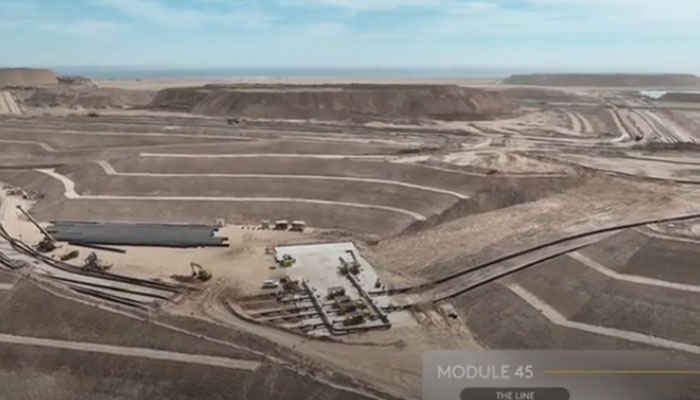
However, NEOM’s main success so far has been the development of a more than $8 billion project to build solar and wind farms that will be used to create so-called green hydrogen, as per Bloomberg.
The latest efforts to scale back the reach of the project come as Saudi Arabia’s PIF, which serves as a key vehicle for investing in strategic domestic and international projects to support the country’s economic diversification and growth objectives, is evaluating a range of options to raise cash.
One option includes accelerating debt sales and lining up equity offerings in its portfolio companies, Bloomberg News reported.
Accelerating debt sales refers to the process of increasing the pace at which a company or entity issues debt securities, such as bonds or notes, to raise funds. By selling debt instruments more rapidly, the entity can quickly access capital to finance its operations or investment activities.
Lining up equity offerings in its portfolio companies involves preparing to sell ownership stakes, or equity, in the companies that the PIF holds within its investment portfolio.
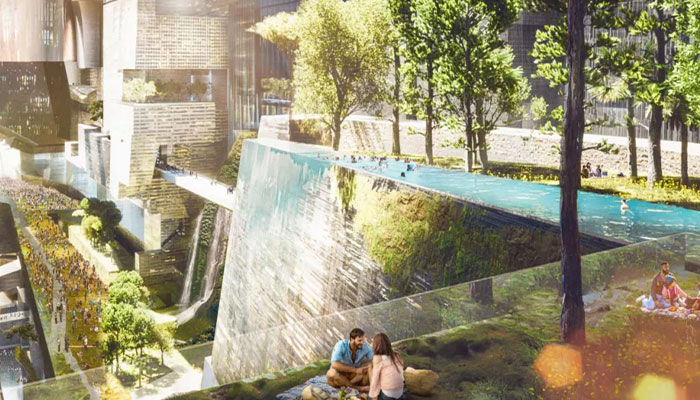
This typically involves planning initial public offerings or secondary offerings of shares to investors in order to raise capital or monetize investments. By arranging these equity offerings, the PIF aims to generate liquidity and potentially realize gains from its investments.
The sovereign wealth fund’s cash reserves dropped to $15 billion as of September — the lowest level since 2020, the earliest year for which data is available, as per Bloomberg.
In 2022, Crown Prince Mohammed reportedly said the first phase of NEOM was expected to cost 1.2 trillion riyals ($320 billion) by 2030. Half of that is expected to come from the PIF, which the defacto ruler chairs.
Recent footage of The Line showed the one trillion-dollar mega-city under construction in Saudi Arabia.
The project, essentially consisting of a massive mirrored skyscraper laid on its side in the desert, had been initially dubbed as “almost impossible.”
Crown Prince Mohammed intended for The Line to be a showpiece that would transform his country’s economy and serve as a testbed for technologies
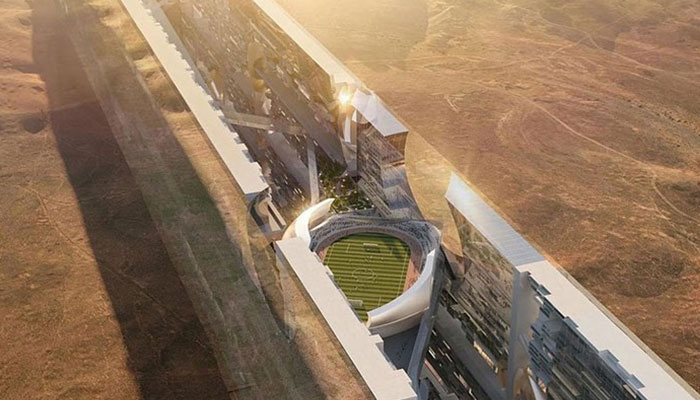
Back in February, Giles Pendleton, the chief operating officer for The Line, took to his LinkedIn page to share some awe-inspiring pictures of the project. He captioned the post: “How to answer the naysayers about the incredible work being done in NEOM?”
Giles continued: “Show a cross-section of the world’s largest building site from the mountains to the sea.
“Massive excavations on the Line, the future of island resorts on Sindalah, and the next generation of ports and logistics at Oxagon.”
The pictures were indeed nothing short of impressive, displaying aerial visions of a vast desert, a dreamy sea, and some building plans.
According to NEOM’s official website, “The Line” is a cognitive city stretching 170 kilometers from NEOM’s mountains across desert valleys to the Red Sea. Moreover, it’s a mirrored architecture, towering 500 meters above sea level but a land-saving 200 meters wide.
Forbidding roads and cars, “The Line” is planned to run entirely on renewable energy, and 95% of the land will be preserved for nature. “People’s health and well-being will be prioritized over transportation and infrastructure, unlike traditional cities,” the website notes.
“The Line” was initially planned to accommodate 9 million people while being built on a footprint of just 34 square kilometers, as per the website. This meant a reduced infrastructure footprint, creating never-before-seen efficiencies in city functions.
Additionally, the ideal climate all year round was anticipated to ensure that residents could enjoy the surrounding nature. Residents would also have access to all daily essentials within a five-minute walk, in addition to a high-speed rail with an end-to-end transit of 20 minutes.
“It was always utterly ridiculous,” a reader commented

















